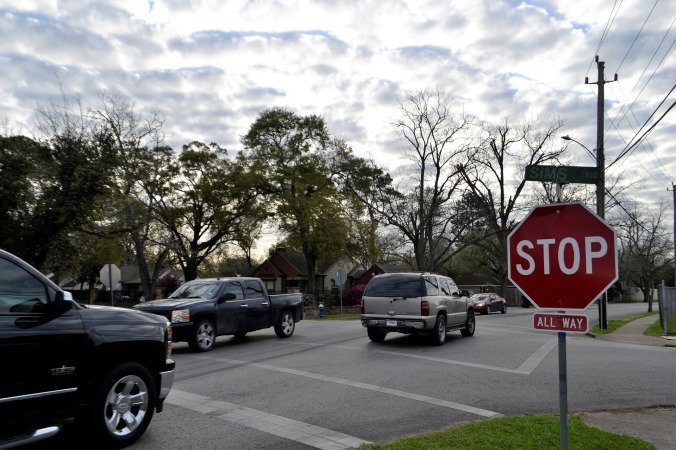
You are beeping your horn; you are impatient to get to work. You are stuck in a bit of congestion. Would it surprise you to learn you may have caused some of this congestion yourself?
To explain, gridlock is a traffic condition that effects intersecting streets (or as the people who live there tend to know them as, blocks). The drivers on each road cannot move because the space they could move to is taken up by a vehicle that is blocking their way, but then that vehicle is being blocked in by another vehicle and so on, seemingly forever.
Luckily, the gridlock can be removed by trying to squeeze the cars (generally turning them slightly) so there is some room for a car to exit. As with all puzzles it only works if all components work together. It’s a life-sized version of the childhood game concentration.
It’s fairly easy to fix though with a simple box junction and a pair of traffic lights and everyone following the proper rule of box junctions (a box junction without traffic lights might fix the congestion problem but might cause even more problems on the rood). This will ensure that at least one exit is free at any one time.
 Maintaining Order:
Maintaining Order:
This is why “blocking the box” has become such a crime. In New York it is subject to a $90 penalty. In Virginia Beach, it is even more; $200.
The box junction has been around for about 50 years, starting in the UK but spreading around the world.
The concept that bigger cars have such difficulty getting anywhere is generally why smaller cars are seen as better on city streets, they just find it easier to maneuver in problems like this. The more trucks in gridlock the harder the problem and trucks are the number one seller in America.
Sat-Nav to the Rescue?
Satellite Navigation actually can make the problem worse also. Some systems will look at the raw data of where traffic is and what speed it’s moving, and then direct vehicles onto side streets that aren’t designed for heavy flow. When it does this with a semi-truck or something pulling a trailer the narrower streets in the older section of town can create a blockage. The other thing about narrow streets is that traffic can only go one way and that means it will take you longer to get to your destination. Sometimes street parking of local vehicles blocks sightlines making it impossible to turn around when you miss a turn.
As well as squeezing through road junctions, cars and trucks have to squeeze under arches. In dire situations a special “truck route” is created, often on a less congested roadway, in order to move truck and bus traffic off car routes and direct them to archways at least 14 feet high. These routes require more maintenance, of course, and are unpopular with neighborhoods sometimes. No matter what this is a costly solution, but can be the only way out of trouble for some older cities.
Not Only Narrow Roads:
It is not only narrow roads that might be a problem in an urban idyll, but also crooked roads. When roads are meant for pedestrians there’s no impetus for them to be straight at all, hence why many historic towns have roads which curve all over the place. It gives a pleasant view when driving, but also makes it more stressful.
A recent trend to give bikes the right of way, so as to make them a popular option to cars has narrowed many roads through the implementation of bike lanes. Portland Oregon, for example, has turned entire roads over to bike only in an effort to embrace and encourage the use of pedal power. They have officially decided that there state road budget will consider the needs of bicyclists and pedestrians over cars.
The move is controversial for three big reasons:
- Motorists pay road taxes, license fees, where cyclists do not.
- Motorists must be trained and licensed to use the roads where cyclists do not.
- Motorists are frequently stopped by police or caught on traffic cams when there is a problem and cyclists in Portland seem to drive with flagrant impunity.
The combination of these three factors has caused Portlanders to label bike riders as “the Spandex Mafia.”
Narrow bridges can also cause serious problems, even if it is a relatively new bridge. Many were just not created for traffic. But this is the way that cities were created, it’s a headache to put right, but it gives the planners something to occupy their day.